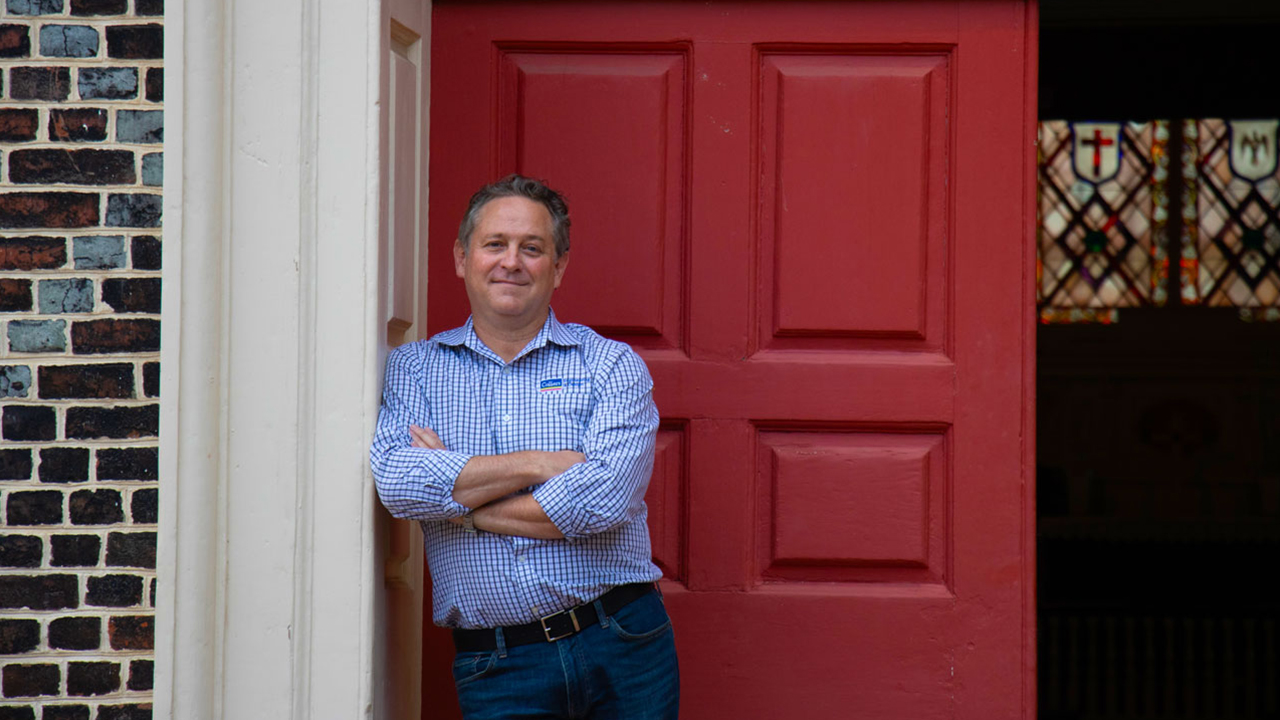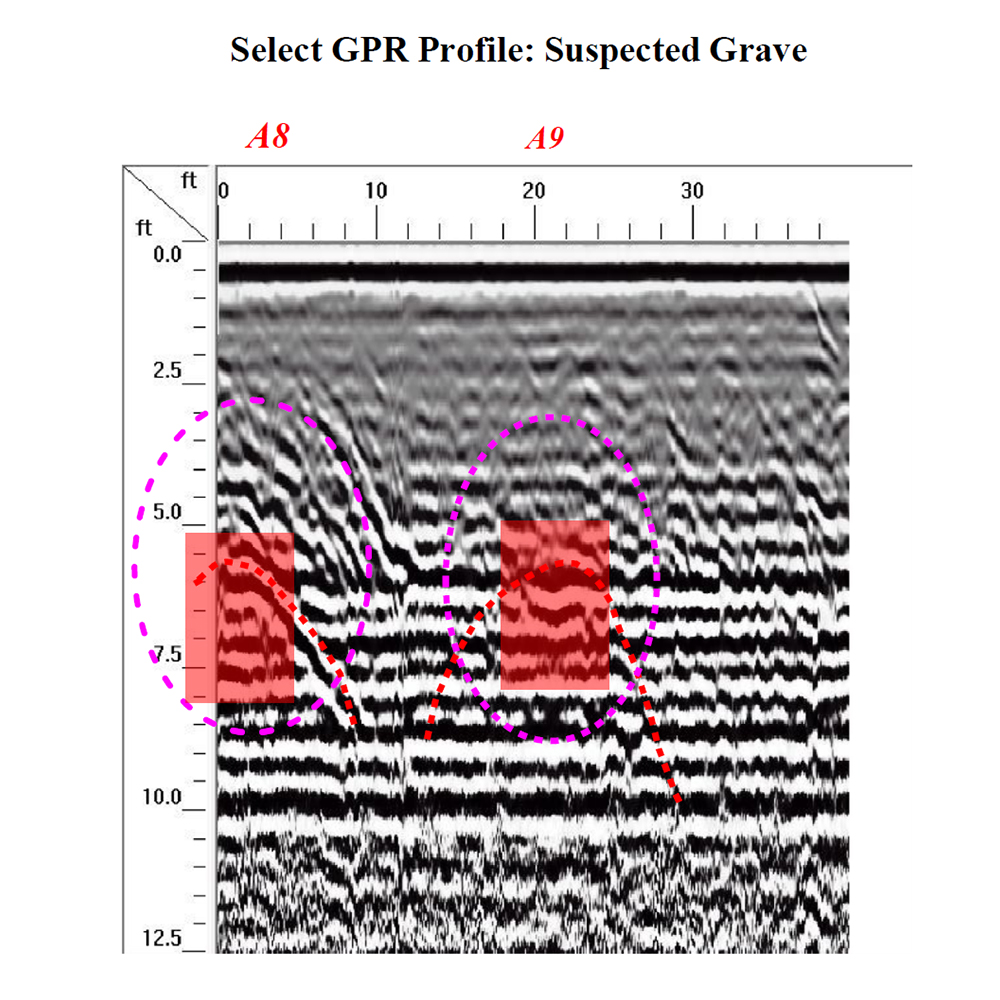Locating the Ghosts of Time with Technology
Steeped in the origins of our ancestry, the Gloria Dei (Old Swedes’) Church is a place that has been harboring history for over 300 years, protecting both architecture and secrets. Situated along the Philadelphia stretch of the Delaware River, the church as it stands today, was built between 1698-1703 by Swedish settlers and replaced the original log cabin church that was adjacent to the newer structure. Destined to become the oldest surviving brick building in Philadelphia, it is the oldest church building in Pennsylvania with the oldest, and one of the only contiguous congregations in existence in the United States. Oh, and Betsy Ross was married there.
“Today’s structure and surrounding cemetery with headstones dated from 1708 to the present day, is recognized by the Department of the Interior and the National Park Service as a great treasure and part of the living history of Philadelphia,” said Amy Grant, Board Chair of the Historic Gloria Dei (Old Swedes’) Preservation Corporation that preserves this historic property. “Elegantly withstanding the challenges of time, the church still has an active congregation and offers a place for respite and reflection in the midst of a bustling urban environment.”
Over the years, as this farming and sea-faring congregation grew, so did the church and its configuration to accommodate its congregation. As the church expanded, a combination of time, nature, and changing of hands, some of the paper records didn’t fare as well leaving some details to legend. A recent desire to confirm lineage sparked a search for the location of an ancestor whose existence in the cemetery was known—but the exact location was not. That person was Peter Rambo.
I’m Related to Peter Rambo
Peter Gunnarson Rambo, who arrived in 1640, was known as the father of New Sweden and among Pennsylvania’s earliest European settlers. Not only did he bring apple seeds from Sweden (now known as the Rambo apple), he led fellow settlers through trials, tribulations and tests of endurance that helped establish the New Sweden Colony that impacted the area that became Philadelphia. In fact, if you walk down the streets of Philly today and talk to many long-time residents—most of them will tell you, one way or the other, “I’m related to Peter Rambo.”
“This is actually a real phenomenon,” said Todd Compton, Division Director of Geo-environmental Services for Colliers Engineering & Design. “Back in the days of the early settlers, it was common for families to have 10 or more children, as many were lost to illness. Survived by four sons (and two daughters), there are a lot of Peter’s descendants still living in this area today.”
The Mission
Todd Compton has always had a passion for researching his ancestry and has followed his family genealogy dating back to the early 1600s, confirming his bloodline connects him directly to Peter Rambo, who was his 10th great grandfather. With an unbroken chain of heritage and strong sense of tracking his family historically, which included recorded proof of his ancestor’s final resting place, Todd recruited his on-staff geophysical team to follow the trail in locating Peter Rambo and to Gloria Dei (Old Swedes’) Church to verify exactly where his ancestor was buried. The church did not have a record of where the plot was supposed to be, though folklore suggested a specific location.

As head of geo-environmental services for Colliers Engineering & Design, Todd oversees natural and cultural resources as well as environmental services for the firm. As a pro bono investigation, the church corporation and preservation group were thrilled to employ his team’s expertise using both research and technology to “find Peter.” In return, they would help the church verify their long-time belief, handed down through the years, that Peter was indeed buried in their cemetery along with the rest of his family. It would also provide a place to train his staff while continuing to share the collected data with the church on a few other initiatives including locating the original log church (block house) foundation and other artifacts known to legend.
Cultural Resources
As in all good investigations, the researcher must begin by obtaining any records they can find. In this case, records included a map of the graveyard passed down for one hundred years and turned into a modern-day version of the existing site. Hearsay and family stories were also passed down through the ages and were taken into consideration because the legends consistently pointed to the grave site all this time.


The Technology
GPR, or ground penetrating radar, is a technology that gives us a chance to look into the past; to retrace history to find things that are not visible above ground. It also provides an understanding of the subsurface without disturbing it. This is crucial when evaluating areas of cultural and historical importance.
“Not unlike playing the childhood game, ghost in the graveyard, where you hide and the ghost seeks and tags their teammates into becoming ghosts,” explained Geophysicist Alex Ross, Senior Project Manager and Leader of the geophysical team for Colliers Engineering & Design. “GPR helps us find hidden features lost to time with electromagnetic waves that may or may not reveal what we are looking for, but it also shows contrasts in the subsurface that provide a tool in unveiling features without disturbing them”.
In this case, the data was gathered through instrumentation that looks similar to a lawn mower, which sends the electromagnetic waves into the ground where they are reflected from the subsurface features. Features made of different materials send back imagery appropriate for its composition. For example, steel versus wood is going to look different in the final imagery.

The team’s approach to finding the site was simple. All accounts indicated approximately where Peter was supposed to be. They scanned the area in a crosshatch pattern until they found anomalies indicating the presence of cultural remains. In this case, the grave excavation walls, and the individual laid to rest and his coffin. For most of those who’ve watched CSI or Bones, mentions of GPR often show amazing 3D renders of coffins, graves, skulls, and such. But in reality, Colliers Engineering & Design’s geophysical team relies on catching the subtle anomalies and minute details that show the bigger picture. When combined with research of the history of the project site and complementary geophysical techniques, we can unlock mysteries of the past.
There, in the right corner near the vestibule, Alex mapped-out the rectangular configuration with flags and called Todd over to meet his ancestor. Placing his hand on top of the grave, Todd took a quantum leap through time, linking the past with the present and exclaimed, “I found you! You matter!”

Conclusion
Strolling through the cemetery in the middle of Philadelphia, you are suddenly thrown back in time, far away from the city bustle. Both cemetery and church are places of discovery and respite. You would never guess this quiet place could be so exciting.
But with the help of modern technology, the mystery of Peter Rambo has been solved so he can finally lay to rest. Along with this confirmation, it is hoped that interpretive signage will be installed to help remind people of Peter’s existence and that he is still doing his part in preserving our history.
“There’s a lot of good that came from finding Peter…”
